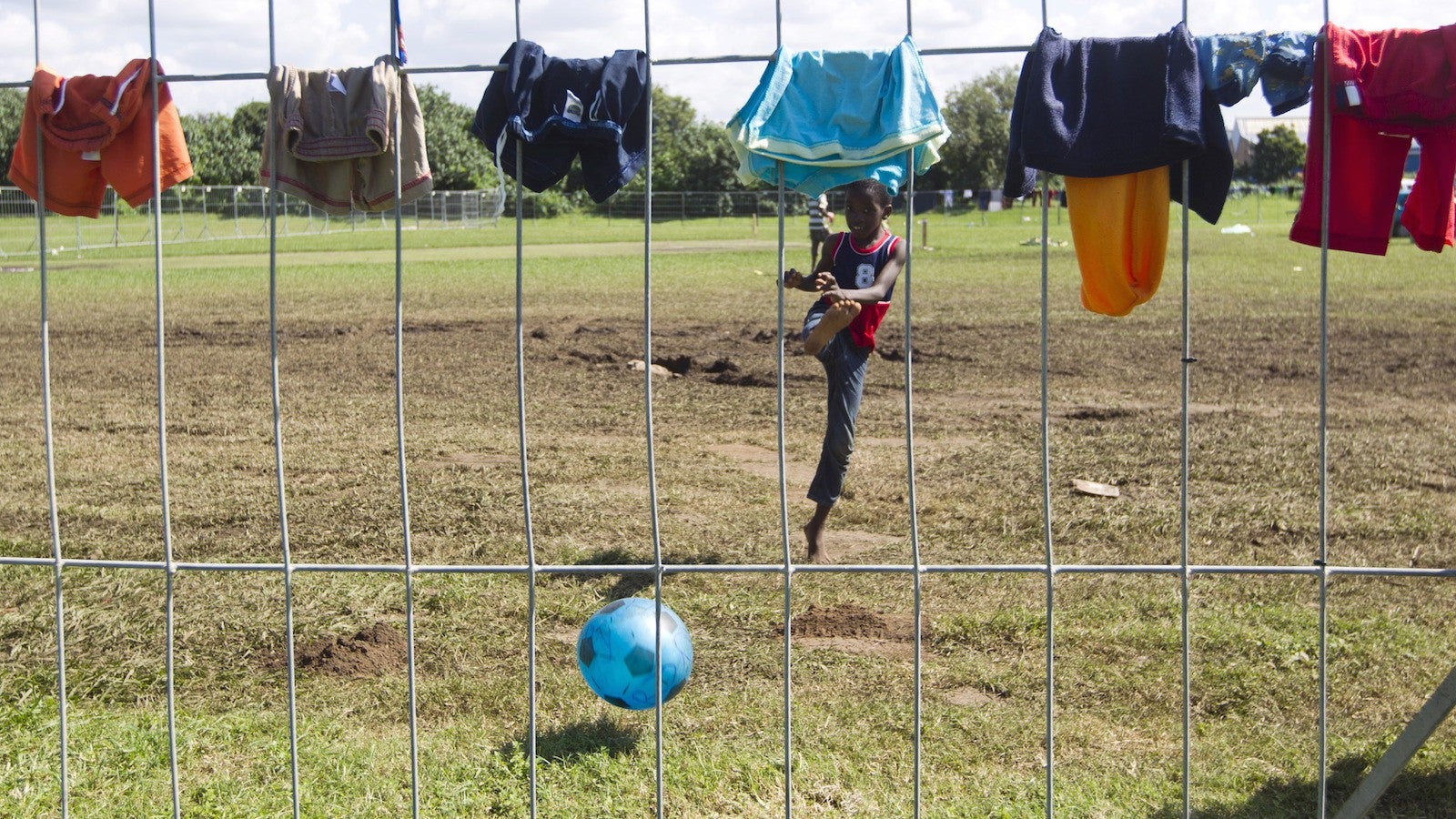South African xenophobia is the symptom of a broken society
It’s been almost three months since I followed a group of Somali women through the streets of Mayfair, a suburb of Johannesburg, into the garage of a small home on Langerman Street. I had spoken to throngs of people that day, all of them victims of a severe wave of anti-immigrant violence that swept through Soweto, some 20 kilometers (12.4 miles) outside central Johannesburg, in late Jan. 2015. At the time, foreign-owned stores, or more specifically—foreign African, Bangladeshi or Pakistani-owned stores—were looted. Although some migrant workers were allowed safe passage by sympathetic locals, many migrants workers were terrorized, forced out of the township. In the mayhem, a South African baby was trampled to death.


It’s been almost three months since I followed a group of Somali women through the streets of Mayfair, a suburb of Johannesburg, into the garage of a small home on Langerman Street. I had spoken to throngs of people that day, all of them victims of a severe wave of anti-immigrant violence that swept through Soweto, some 20 kilometers (12.4 miles) outside central Johannesburg, in late Jan. 2015. At the time, foreign-owned stores, or more specifically—foreign African, Bangladeshi or Pakistani-owned stores—were looted. Although some migrant workers were allowed safe passage by sympathetic locals, many migrants workers were terrorized, forced out of the township. In the mayhem, a South African baby was trampled to death.
I spoke to several foreigners who had fled to Mayfair from Soweto that day. Each had stories that needed to be told, some stories alleged serious misconduct from the South African police, other stories were filled with anger, hopelessness and despair.
The violence is not new. Neither is it limited to the mobs we are seeing on television. Opinion polls have shown that xenophobia in South Africa is more rampant than most think. It also cuts across all sections of society; violence against foreign nationals is currently daily reality.
In 2012 alone, 238 incidents of violence against foreign nationals were reported, with 120 people killed, according to the United Nations High Commissioner for Refugees. An estimated 7,500 foreign nationals were displaced that year.
A battle to belong is being waged in South Africa, with the central points of contention being who owns what, and how they came to own and keep those possessions.
In the garage in Mayfair, women showed me a small stash of groceries one of them had salvaged from her husband’s store in Soweto—it was hardly enough to fill a single shelf. The rest of the goods, they said, had been looted. This was all that remained of their lives in Soweto, the only remains of a livelihood.
After I took photographs of the salvaged goods strewn across the floor, one of the women showed me old photographs of a ransacked store, walls blackened by fire. The photographs were a few years old. I saw a case number, but of course the case was long cold—it’s very rare for foreigners to secure a conviction in cases of looting and public violence. These women have all been victims of violent dispossession before—they are Somali refugees after all.
“Sometimes when people realize I am not South African they treat me badly, but not always,” 28-year-old Santos Magul, a Mozambican national told me. He is a street vendor, peddling a variety of cellphone accessories to passers-by in Jabulani in Soweto, South Africa. “The bad guys wait to make trouble for people like me but most people are good,” he said.
Life in townships like Soweto is complicated by severe underdevelopment. A World Bank survey last year found that about half of South Africa’s urban population live in townships and informal settlements, accounting for 38% of working-age citizens, but nearly 60% of its unemployed. Street corners in townships like Soweto are typically filled with young people milling around, playing games, smoking and whiling away the day. It is this subset of young South Africans in particular who are left to compete for the township’s limited opportunities while the greater city remains out of reach.
A few stalls away from Santos, I met Themba, a South African. He refused to give me his last name, but he said that people weren’t spending money the way they used to. “In one day I sell stuff worth 120, 150 rand [roughly 10-12 dollars],” he said, pointing to a table laden with cheap cosmetics and accessories.
“Foreigners take business away from us,” he said. “I still have to eat from there. My profit is not big,” he said. “I have to walk to my house every day. I think the government could help us to make stalls here on the pavement and give us running water, and toilets.”
While the South African government has worked to expand the reach of basic services, there remains swathes of population without access to basic services.
In terms of wealth distribution, South Africa is the second most unequal society in the world. The gap between those who have, and those who don’t is staggering, and it stands in the way of a widespread sense of unity. The small green identity document that signals South African citizenship is no guarantor of belonging when one out of four citizens are jobless.
To belong means to be accepted as a member of something or to feel part of something. In South Africa, that sense of belonging is weak among disempowered and impoverished South Africans. And often, when that sense of belonging cannot be forged naturally, it is sought through the exclusion of others.